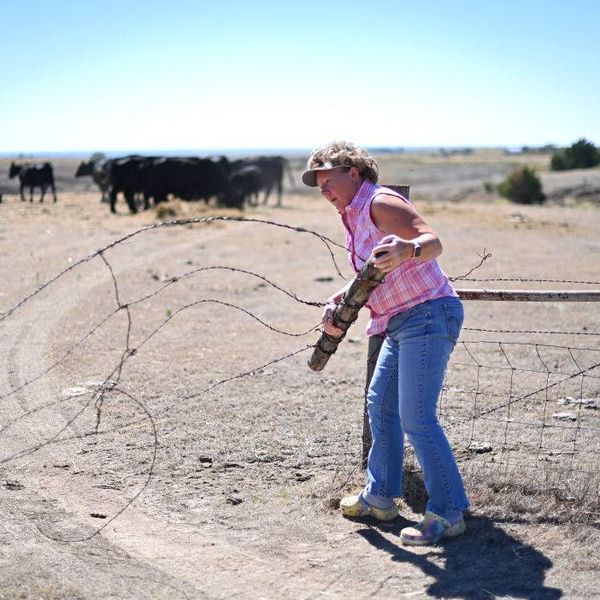Deadliest Year for Afghan Civilians
The
number of civilians killed in war-related violence in
Afghanistan touched 2,412 last year, the highest number since the 2001
US-led invasion, the UN has said.
A report by the UN mission for Afghanistan pointed to the
"intensification and spread of the armed conflict" in what was also the
deadliest year for foreign forces, with 520 troops killed.
The
number of civilians killed in war-related violence in
Afghanistan touched 2,412 last year, the highest number since the 2001
US-led invasion, the UN has said.
A report by the UN mission for Afghanistan pointed to the
"intensification and spread of the armed conflict" in what was also the
deadliest year for foreign forces, with 520 troops killed.
It
said 70 per cent of civilian deaths were caused by Taliban attacks,
while 25 per cent were killed by pro-government and foreign forces - a
28 per cent reduction in deaths caused by Western forces since 2008.
The remaining 135 civilians were killed in violence not attributable to the conflicting parties, the UN said in its report.
'Excessive use of force'
The UN found most deaths attributed to pro-government forces were killed in air raids as well as search and seizure operations.
"These often involved excessive use of force, destruction to
property and cultural insensitivity, particularly towards women," it
said.
But it said that a change in Nato command structure had helped reduce the number of non-combatant deaths by coalition troops.
US General Stanley McChrystal, the commander of the foreign forces
in Afghanistan, has made minimising civilian deaths and injuries a
central tenet of his counter-insurgency strategy, ordering reduced air
attacks as one way of achieving this objective.
The UN report said the change in Nato forces' command structure,
"specific steps to minimise civilian casualties" and "a new tactical
directive" by the force contributed to the reduction in non-combatant
deaths.
Civilian casualties are a source of tension between the Afghan
government of Hamid Karzai, the Afghan president, and the international
forces fighting the insurgency.
Recent incidents, such as the deaths of 10 civilians including eight
teenagers in eastern Kunar province in an authorised but non-military
US operation, have seen Afghans take to the streets to protest
against the presence of foreign troops.
Source:
Agencies
An Urgent Message From Our Co-Founder
Dear Common Dreams reader, The U.S. is on a fast track to authoritarianism like nothing I've ever seen. Meanwhile, corporate news outlets are utterly capitulating to Trump, twisting their coverage to avoid drawing his ire while lining up to stuff cash in his pockets. That's why I believe that Common Dreams is doing the best and most consequential reporting that we've ever done. Our small but mighty team is a progressive reporting powerhouse, covering the news every day that the corporate media never will. Our mission has always been simple: To inform. To inspire. And to ignite change for the common good. Now here's the key piece that I want all our readers to understand: None of this would be possible without your financial support. That's not just some fundraising cliche. It's the absolute and literal truth. We don't accept corporate advertising and never will. We don't have a paywall because we don't think people should be blocked from critical news based on their ability to pay. Everything we do is funded by the donations of readers like you. Will you donate now to help power the nonprofit, independent reporting of Common Dreams? Thank you for being a vital member of our community. Together, we can keep independent journalism alive when it’s needed most. - Craig Brown, Co-founder |
The
number of civilians killed in war-related violence in
Afghanistan touched 2,412 last year, the highest number since the 2001
US-led invasion, the UN has said.
A report by the UN mission for Afghanistan pointed to the
"intensification and spread of the armed conflict" in what was also the
deadliest year for foreign forces, with 520 troops killed.
It
said 70 per cent of civilian deaths were caused by Taliban attacks,
while 25 per cent were killed by pro-government and foreign forces - a
28 per cent reduction in deaths caused by Western forces since 2008.
The remaining 135 civilians were killed in violence not attributable to the conflicting parties, the UN said in its report.
'Excessive use of force'
The UN found most deaths attributed to pro-government forces were killed in air raids as well as search and seizure operations.
"These often involved excessive use of force, destruction to
property and cultural insensitivity, particularly towards women," it
said.
But it said that a change in Nato command structure had helped reduce the number of non-combatant deaths by coalition troops.
US General Stanley McChrystal, the commander of the foreign forces
in Afghanistan, has made minimising civilian deaths and injuries a
central tenet of his counter-insurgency strategy, ordering reduced air
attacks as one way of achieving this objective.
The UN report said the change in Nato forces' command structure,
"specific steps to minimise civilian casualties" and "a new tactical
directive" by the force contributed to the reduction in non-combatant
deaths.
Civilian casualties are a source of tension between the Afghan
government of Hamid Karzai, the Afghan president, and the international
forces fighting the insurgency.
Recent incidents, such as the deaths of 10 civilians including eight
teenagers in eastern Kunar province in an authorised but non-military
US operation, have seen Afghans take to the streets to protest
against the presence of foreign troops.
Source:
Agencies
The
number of civilians killed in war-related violence in
Afghanistan touched 2,412 last year, the highest number since the 2001
US-led invasion, the UN has said.
A report by the UN mission for Afghanistan pointed to the
"intensification and spread of the armed conflict" in what was also the
deadliest year for foreign forces, with 520 troops killed.
It
said 70 per cent of civilian deaths were caused by Taliban attacks,
while 25 per cent were killed by pro-government and foreign forces - a
28 per cent reduction in deaths caused by Western forces since 2008.
The remaining 135 civilians were killed in violence not attributable to the conflicting parties, the UN said in its report.
'Excessive use of force'
The UN found most deaths attributed to pro-government forces were killed in air raids as well as search and seizure operations.
"These often involved excessive use of force, destruction to
property and cultural insensitivity, particularly towards women," it
said.
But it said that a change in Nato command structure had helped reduce the number of non-combatant deaths by coalition troops.
US General Stanley McChrystal, the commander of the foreign forces
in Afghanistan, has made minimising civilian deaths and injuries a
central tenet of his counter-insurgency strategy, ordering reduced air
attacks as one way of achieving this objective.
The UN report said the change in Nato forces' command structure,
"specific steps to minimise civilian casualties" and "a new tactical
directive" by the force contributed to the reduction in non-combatant
deaths.
Civilian casualties are a source of tension between the Afghan
government of Hamid Karzai, the Afghan president, and the international
forces fighting the insurgency.
Recent incidents, such as the deaths of 10 civilians including eight
teenagers in eastern Kunar province in an authorised but non-military
US operation, have seen Afghans take to the streets to protest
against the presence of foreign troops.
Source:
Agencies

